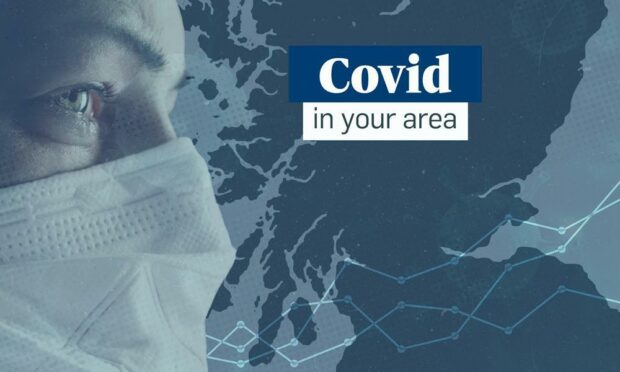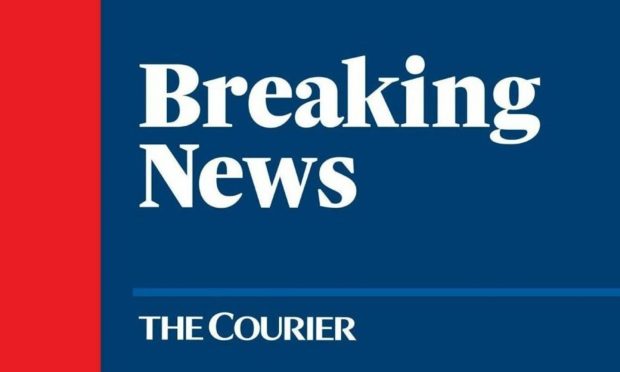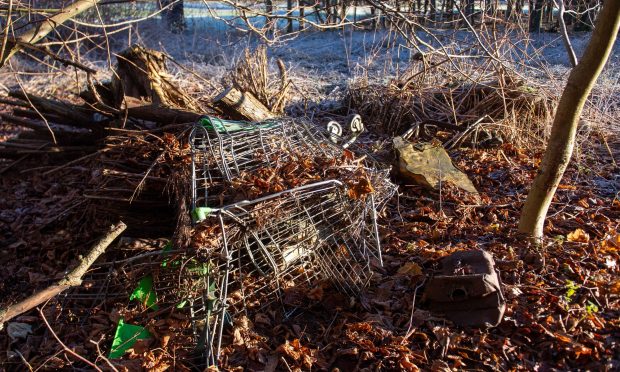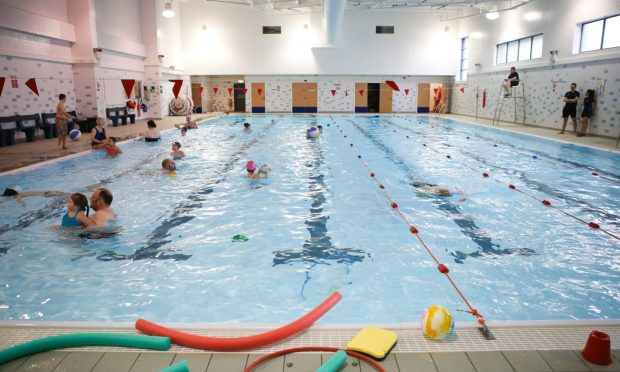As daily Covid-19 cases have been dropping since the start of the month, all restrictions brought into force in December as part of the battle against the Omicron variant are to be lifted from Monday.
Some of the rules put in place on Boxing Day including restrictions on the number of people at large scale events were lifted last week, however it has been announced that the remaining rules, including the closure of nightclubs, will be removed on Monday.
But how has the fall in Scotland-wide case numbers affected lower case rates in neighbourhoods across the country?
Our interactive maps below show the case rate by intermediate zone for Dundee, Angus, Perth and Kinross and Fife.
Each intermediate zone (IZ), represents an area, quite often a neighbourhood, within each local authority.
Hovering over each area will give additional information including the population of each neighbourhood, how many positive cases have been recorded there in the past seven days, and the seven-day case rate per 100,000 population – a measure which is used to compare areas with different populations against each other to accurately track the spread of the virus.
Below includes details for case rates accurate as of January 17, which was the latest information at the time of writing, as this data is subject to a three-day lag in being uploaded by Public Health Scotland.
We have compared case rates to previous weeks to provide context about whether cases are rising or falling in your area.
What are the case rates like in Dundee?
The below chart shows the case rates for each neighbourhood in Dundee.
This week, the neighbourhoods with the highest case rates were Douglas East, The Glens and Whitfield.
Douglas East had a case rate of 1,057.62 per 100,000 population and 29 positive cases in a population of 2,742.
Meanwhile, The Glens had a case rate of 996.47 per 100,000 population and in the past seven days, 48 positive Covid-19 cases out of 4,817 people. Whitfield had a case rate of 836.07 per 100,000 population, and 51 cases out of 6,100 residents.
All areas of Dundee saw a decrease in case rates compared to last week.
Last week, the top three neighbourhoods were Fairmuir, Ardler and St Marys and Menzieshill.
What are the case rates like in Angus?
The below chart shows the case rates for each neighbourhood in Angus.
The neighbourhoods with the highest case rates in Angus this week were Arbroath Harbour, Forfar Central and Arbroath Cliffburn.
Arbroath Harbour had a case rate of 1,098.66 per 100,000 population, and 51 positive cases in a population of 4,642.
Forfar Central had a case rate of 1,097.28 per 100,000 population, and 52 Covid-19 cases in the previous seven day period- out of 4,739 residents.
Meanwhile, Arbroath Cliffburn had a case rate of 926.84 per 100,000 population and 47 cases out of 5,071 people.
Covid-19 case rates in Angus have decreased in every neighbourhood compared to last week.
Last week, the top three neighbourhoods were Arbroath Cliffburn, Montrose North and Forfar Central.
What are the case rates like in Perth and Kinross?
The below chart shows the case rates for each neighbourhood in Perth and Kinross.
The areas with the highest case rates this week were Muirton, Letham and Errol and Inchture.
Muirton had a case rate of 1,027.3 per 100,000 population and 38 positive cases in the past seven day period, out of 3,699 people.
Letham had a case rate of 1,003.34 per 100,000 population and 54 Covid-19 cases in a population of 5,382, while Errol and Inchture had a slightly lower case rate of 870.79 per 100,000 population and 37 cases out of 4,249 residents.
The case rate decreased in all areas of Perth and Kinross compared to last week.
Last week, the top three neighbourhoods were North Muirton and Old Scone, Blairgowrie East (Rattray) and Auchterarder.
What are the case rates like in Fife?
The below chart shows the case rates for each neighbourhood in Fife.
The neighbourhoods with the highest case rates in Fife were Kirkcaldy Bennochy East, Methil Methilhill and Ballingry.
Kirkcaldy Bennochy East had a case rate of 1,926.38 per 100,000 population, and 56 positive cases in the past seven days out of its population of 2,907.
Methil Methilhill had a case rate of 1,926.38 per 100,000 population and 64 Covid-19 cases out of 4,451 people, while Ballingry had a case rate of 1,432.47 per 100,000 population and 42 cases out of 2,932 residents.
Most areas of Fife saw a decrease in case rates compared to last week, with the exception of Kirkcaldy Bennochy East which saw an increase.
However, the top four neighbourhoods in Scotland with the highest case rates were all in Fife.
Last week, the top three neighbourhoods were Leslie and Newcastle, Lochore and Crosshill and Methil East.
Comparing Tayside and Fife
The below chart shows the seven day case rate in each local authority across Tayside and Fife since March 2020.
How does Tayside and Fife compare to the rest of Scotland?
The below chart shows the top 10 neighbourhoods in Scotland with the highest case rate per 100,000 population.
The top four neighbourhoods in Scotland this week were all located in Fife – Kirkcaldy Bennochy East, Methil Methillhill, Ballingry and Glenrothes South Parks.
However, the highest case rates are not as high as recorded in previous weeks.










